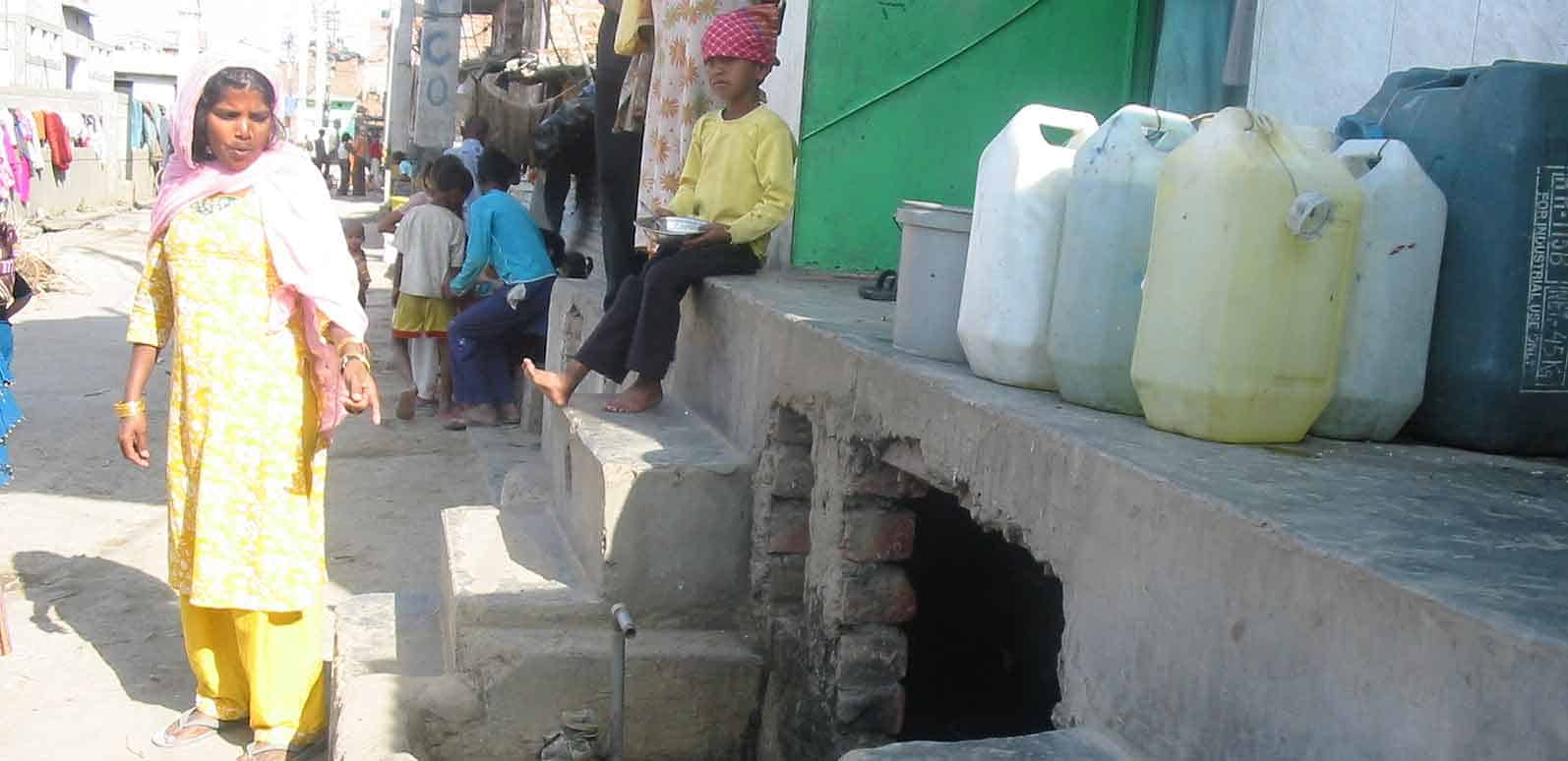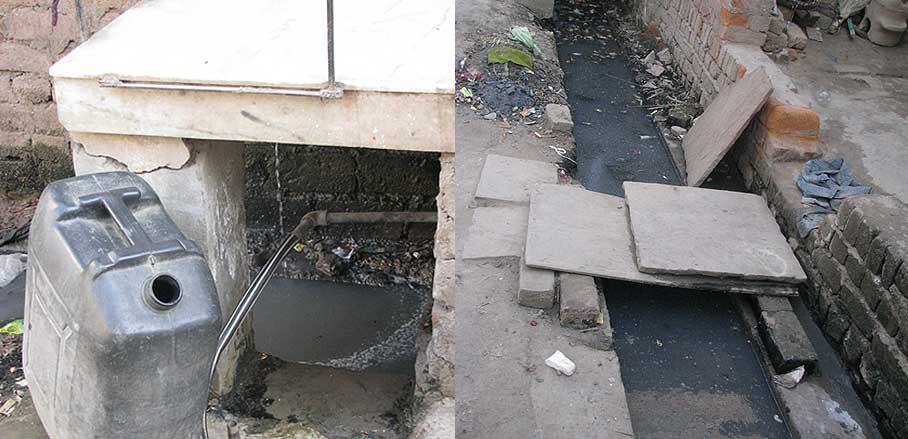A Place Like Too Many Others: Gender Inequality in Bawana, Delhi
In urban settlements around the world, city administrations struggle, and often fail, to provide essential services, safe spaces, and socio-economic securities to residents. While this poses difficulties and dangers to all inhabitants, the consequences of such neglect are especially severe for low-income women and girls.
Can social protection systems, public services, and sustainable infrastructure lead to better lives for the most marginalised members of society? Do they reduce poverty and lead to gender equality and to the empowerment of women and girls? If these measures are capable of doing so, how can they be implemented?
To answer these questions is crucial to realisation of the New Urban Agenda, the Agenda 2030, and the Sustainable Development Goals (SDGs). They will be grappled with by the many governments, UN agencies, women’s groups, and civil society organisations who will meet at the UN Commission on the Status of Women (CSW) in March 2019.
Bawana, New Delhi – Aggravating Gender Inequality in Urban Development
Some answers to these questions can be found when talking to Suneeta Dhar of Jagori, a feminist group in New Delhi that works with evicted women slum dwellers. She highlights the multi-dimensional negative impacts of inadequate public services and infrastructure on women and girls and their standard of living.
According to her, “Appropriate, adequate and sustainable public services and gender-responsive infrastructure is critical for low-income women and girls. A reliable supply of water and well-designed community water stand-pipes will reduce the time women spent in queues and thus positively impact upon women’s and girls’ time burdens in unpaid care work.”

© Jagori
The provision of water and sanitation services is a core responsibility of governments. Yet residents of Bawana in northern Delhi – a resettlement colony of evicted slum dwellers established around 2004 – do not receive sufficient public infrastructure and services.
“If only plans were made to develop piped drinking water, drainage and a sewerage system in Bawana” continues Dhar, “women and girls could have access to water and toilets in their homes and not have to negotiate their way through badly maintained, unsafe community toilet blocks with no provisions for menstrual waste. Often, toilet complexes are locked up in the night, promoting open defecation. While finding space for open defecation in a densely built environment is difficult enough, it also is dangerous. Many girls and women reduce their water and food intake to avoid going out at night. Lack of gender-sensitive designs also creates barriers for pregnant women, older women, and those with disabilities to access bathing spaces and sanitation facilities.”
Daily Hazards
Today, Bawana has over 75,000 residents. It still does not have regular and reliable electricity or public transport, it still does not have sufficient health, educational, and childcare facilities and it still does not have designated spaces for informal sector women workers to sell their wares. There is no provision for access to One Stop Centres in the neighbourhood that would offer women survivors of violence access to a set of services, including medical, legal, and psychological support.
Currently, Jagori is the only such provider in Bawana. Jagori also accompanies women and youth leaders within communities to undertake regular safety audits and convenes a ‘safety chaupal’ (meaning: public space) where attendants plan how to advocate for change with local authorities.
Daily living is hazardous due to poor solid waste management and discharge of untreated industrial effluents into the drains and water bodies, leading to contamination of groundwater. Some residents get their drinking water supply through private tube wells installed in their homes. The lack of safe drinking water and sanitation causes health problems. Again, the consequences are especially felt by women when unsafe portable water leads to sickness in children, once again increasing women’s care work and depleting already low incomes.

© Jagori
The Question of Income
Gender-responsive public infrastructure and services can greatly reduce the time women spend in unpaid domestic work and thus provide them better access to income. Income generated from employment would go a long way to reducing women’s poverty and disfranchisement.
But, as can be seen in Bawana as well, women are also more vulnerable to the dangers employers expose their workers to. Bawana is a new industrial hub, with a host of factories that do not comply with regulations. In January 2018, a fire in one of the factories highlighted the vulnerability of women workers onsite. Ten of the 17 women workers were killed. Such incidents have especially severe consequences for women workers, as they are often not organised in unions and lack access to labour rights and benefits.
Realities Can Be Changed
Bawana is by no means an exception in terms of the realities of peri-urban living around the world. Low-income neighbourhoods everywhere face similar realities of inadequate public infrastructure and services. This is often the norm and many residents self-organise to provide some level of essential services for themselves.
Indian feminist urban activists met in New Delhi at the end of August 2018 to give shape to the conference “Feminist Urban Futures”, prioritising city planning, governance, and management from a female perspective generally, and specifically in terms of the most marginalised women and girls, such as female sex-workers, women with disabilities, older women, lesbians, and trans women. One of the recommendations includes the use of gender-responsive budget tools to assess if the money invested in infrastructure and services is equitably distributed.
Calling National and Local Governments to Action
If national and local governments and cities are to lead the way in the realisation of the Agenda 2030 and the SDGs, then they need to focus on addressing gender inequality in cities. Here are a few things they can begin with.
Ask low-income women and girls and the women’s groups that work with them what they need from public infrastructure and services, then provide what they need – in the way they need it.
Focus on structural changes in local governments so that the way decisions are made and resources allocated are gender-inclusive and recognise intersecting inequalities in all aspects of urban governance and management.
Expand city level data sets with relevant variables such as sex, age, class, location, caste, religion, etc. and use evidence-based decision making for allocation of resources for urban sustainability.
Make the reduction of women’s and girls’ unpaid work in the care economy and the sharing of domestic work a key focus of local government mandates.
Implementing these recommendations concurrently will make a tangible change towards substantive equality for diverse women and girls as well as the members of their families.
- Bogota: Centring Women’s Care Work as a Core Municipal Function - 18. July 2023
- A Place Like Too Many Others: Gender Inequality in Bawana, Delhi - 8. March 2019
- Reclaiming Urban Planning - 8. August 2018
